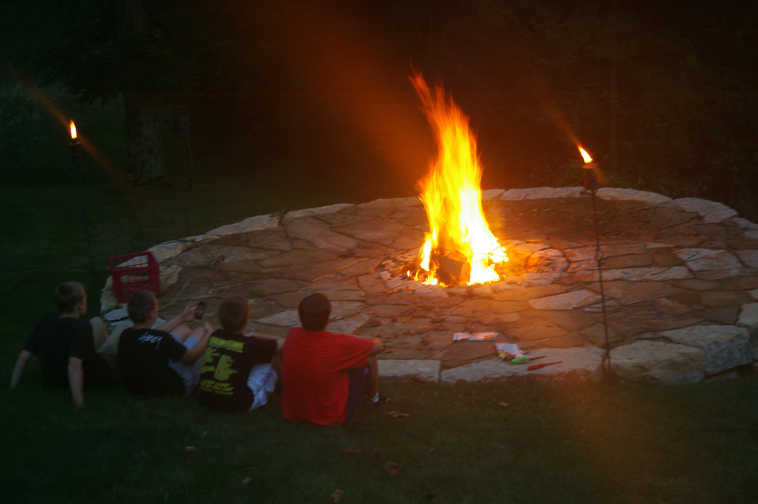As fun as summer at the lake is, Sue Vanderwiel and family also make the most of their Apple River, Illinois, vacation home in the winter. That’s when “it is much quieter, and we can just hang out, play games and chill, literally and figuratively.”
The family gathers around a big stone fire pit (15 feet in diameter) — often with s’mores, hot chocolate and peppermint schnapps for Mom and Dad — even when those Midwestern temperatures drop.
“We have been out there with snow on the ground,” the Chicago-area resident says. “Regardless of the season, we stargaze and watch satellites travel across the sky.”
Refusing to become shut-ins during the winter, many homeowners are making their outdoor spaces warm and comfy for year-round use. Builders cite increasing demand from clients trying to maximize their homes’ potential by adding everything from DIY ice rinks to elaborate outdoor kitchens.
“We are working harder, we are working longer hours, and we don’t necessarily want to get in the car and travel through traffic on weekends,” says landscape designer and builder David Veron, owner of The Veron Company in Marlborough, Massachusetts. “People want to stay home and make the most of their time there.”
Making outdoor spaces usable in chillier months, Veron says, requires only that they are comfortable (i.e. warm), safe and “pleasing to the eye.”
Features that lend themselves to an activity — cooking in an outdoor pizza oven, sipping wine next to an outdoor fireplace or watching the kids play, for instance — are a plus.
“If you’re warm and the space is visually appealing, that’s great. But what are you doing out there?” Veron says.
You could easily spend tens (even hundreds) of thousands of dollars on such projects — how about that three-sided kitchen with heated floors and ceilings? — but there are also cost-efficient ways to make outdoor space usable year-round.
“If you’re a hockey fan, putting in a nice ice rink (which costs around $400) and fire pit (which start at about $500), is absolutely a home run,” Veron says. “You’ve just bought another season.”
Mike Marler, general manager of Outdoor Solutions, a Jackson, Mississippi-area company that specializes in creating outdoor living areas, says there are also ways to warm up structures. Most of the structures his company builds include some sort of roof or walls — pavilions, pool houses or outdoor kitchens, for example. Installing roll-up shutter or louvered doors helps keep the chill out, especially in a relatively mild place like Mississippi, where winter temperatures rarely dip below the 20-degree mark.
“We’re not trying to climate-control those spaces as much as make them comfortable,” he says.
And when building a new space, features that make it usable in winter — in-floor heat, lighting, fireplaces — should be included from the get-go.
“You have to design it for summer first,” Veron says. “But then you look at how we can take that outdoor space and try to stretch it into three or four seasons.”
And you don’t need a lot of acreage. Veron says he’s created winter-worthy spaces in small backyards that abut neighbors, as well as full-blown, heated kitchens along snowmobile or ski trails. “It’s about the experience,” he says.
That’s what Vanderwiel has been enjoying since installing her fire pit three years ago.
“We really enjoy our time, and find gazing into the fire, the smell of the burning fire and the crackling sounds very relaxing,” she says. “We are very happy.”

